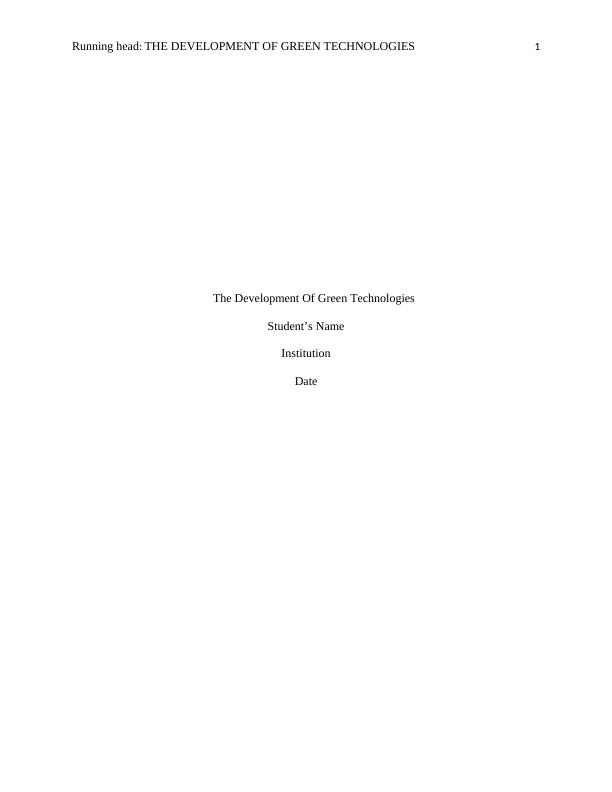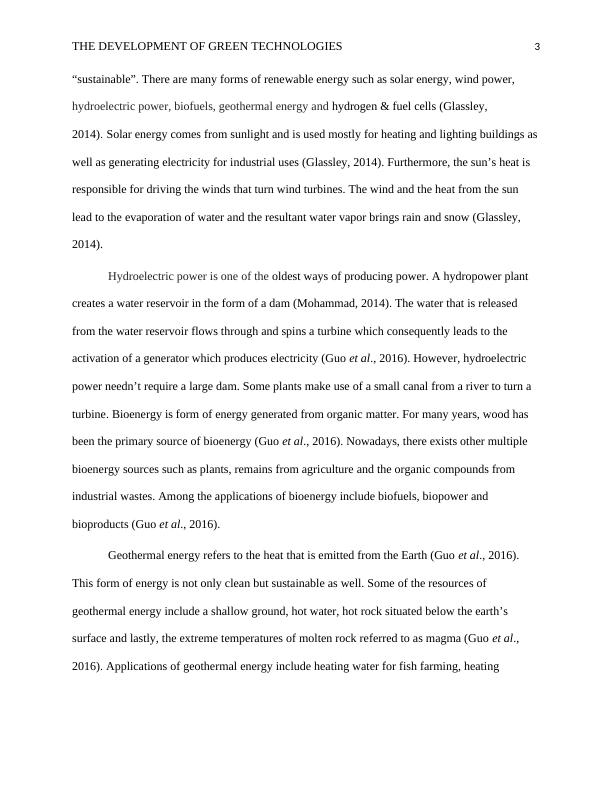The Development of Green Technologies
Each group will analyze a social problem/issue using a framework presented in class and submit a 5-6 page report.
8 Pages2038 Words55 Views
Added on 2023-06-13
About This Document
This article discusses green technology, types of energy, green buildings, green chemistry, and green nanotechnology. It explains the definition of green technology, types of renewable energy, green buildings, green chemistry, and green nanotechnology. It also highlights the benefits of green technology and its impact on our lives.
The Development of Green Technologies
Each group will analyze a social problem/issue using a framework presented in class and submit a 5-6 page report.
Added on 2023-06-13
ShareRelated Documents
End of preview
Want to access all the pages? Upload your documents or become a member.
Renewable Energy Systems
|19
|3922
|30
Developing Products with Sustainable Energy - PDF
|6
|1085
|18
Electricity: Sources, Delivery, Merits, and Demerits
|9
|2156
|231
Tidal Power Generation and Usage
|19
|4162
|327
The Need for a Shift to Renewable Energy
|10
|2565
|271
The Future of Energy: Guiding Decisions with Evidence
|9
|1830
|317



